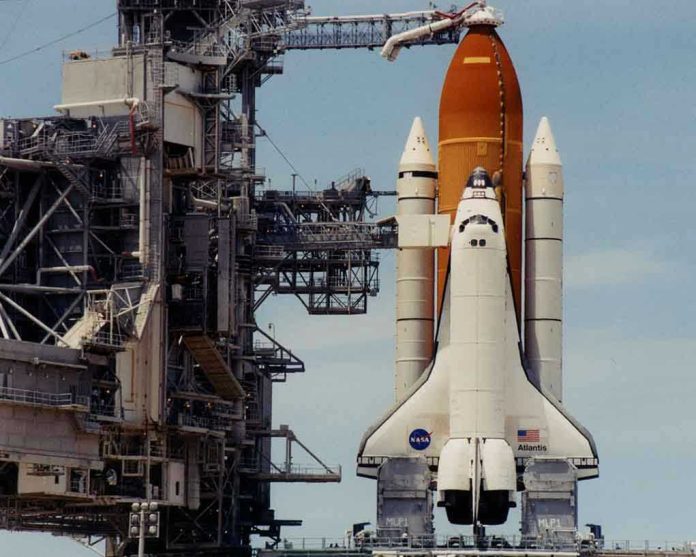
A superheated plasma region, dubbed a “wall of fire,” challenges our understanding of the solar system’s boundary.
Story Highlights
- Voyager 1 and 2 confirm the existence of a “wall of fire” at the heliopause.
- The discovery challenges previous assumptions of a static solar system boundary.
- Implications extend to understanding cosmic ray shielding and interstellar exploration.
- NASA’s ongoing analysis refines models of the heliopause.
Voyager’s Groundbreaking Discovery
In 2012, NASA’s Voyager 1 spacecraft, launched in 1977, crossed the heliopause, the boundary marking the edge of our solar system. Instead of finding a clear demarcation, it detected a superheated plasma region, now referred to as a “wall of fire.”
This discovery was later corroborated by Voyager 2 in 2018, confirming the region’s persistent nature. The detection of this turbulent zone fundamentally alters our understanding of the heliopause, challenging earlier assumptions that it was a static barrier.
Scientific Implications for the Future
The “wall of fire” discovery holds significant implications for future interstellar exploration and our understanding of other star systems. By providing the first direct measurements of the heliopause’s true nature, the Voyager missions have set a new paradigm in heliospheric science.
This knowledge influences the design and expectations for future interstellar probes, as well as informs astrophysical theories about the boundaries of other stellar systems. The persistent nature of this superheated plasma region underscores the complexity of cosmic ray propagation and the Sun’s interaction with the galaxy.
NASA and affiliated scientists continue to analyze Voyager data to refine models describing the heliopause and its interaction with the interstellar medium. The findings have been highlighted as crucial for understanding the Sun’s protective bubble and planning future interstellar missions. Both Voyager spacecraft, despite diminishing power, continue to transmit data, aiding researchers in updating heliospheric models and considering implications for other stars.
Reactions from the Scientific Community
Experts within the space science and astrophysics communities have emphasized the significance of direct measurement over theoretical models. The “wall of fire” represents a paradigm shift in how we understand the boundaries of our solar system. Some theorists suggest that these findings might apply to other stars, although more data is needed to generalize. As NASA and the Voyager Science Team continue their research, the broader scientific community remains keenly interested in the potential applications of these insights for cosmic ray shielding and spacecraft design.
At The Edge Of Our Solar System, NASA's Voyager 1 Found A 'Wall Of Fire' @NASA @Yahoo #science #space #universe #SolarSystem #galaxy #planets #sun #moon #WallOfFire #SpaceExploration #Voyager1 #NASA https://t.co/lPoOZYUt60
— Douglas Holtzman (@DouglasHoltzman) November 24, 2025
In the long term, the discovery of the “wall of fire” may influence funding and priorities for future space missions. While the immediate implications are primarily scientific and educational, the broader impacts of this groundbreaking discovery could extend to various sectors, advancing our understanding of plasma physics and space weather modeling.
Sources:
NASA Voyager 1 Finds ‘Wall of Fire’ at Solar System Edge












